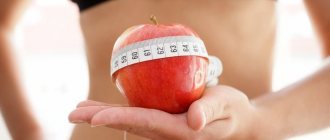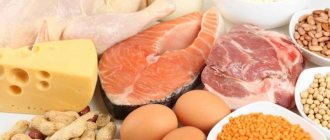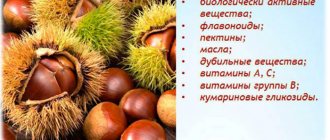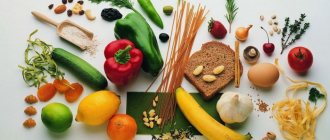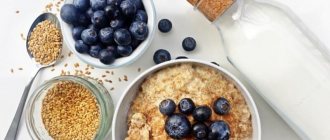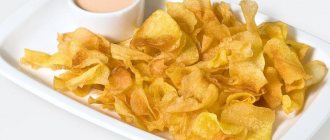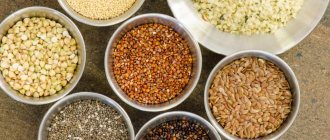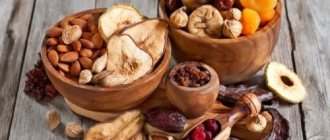Watermelon
| Product | Squirrels | Fats | Carbohydrates | Kcal per 100 g. |
| yellow | 0.6 | 0.1 | 6.2 | 38 |
| canned | 0.5 | 0.09 | 9 | 36.5 |
| marinated | 0.5 | 0.09 | 9 | 36.5 |
| fresh | 0.6 | 0.1 | 5.8 | 25 |
Video: “Citrus fruits: features of citrus fruits; harm and benefits of eating citrus fruits"
The benefits of exotic fruits for humans
Exotic fruits are interesting and tasty. Often unusual fruits have a lot of useful substances and often cause an allergic reaction. You need to eat such fruits with caution and in moderation.
Avocado is one of the most high-calorie fruits. This fruit does not taste sweet and is often combined with other foods in salads and snacks. It contains a large amount of fatty acids and has a positive effect on the gastrointestinal tract and the condition of human skin.
Mango is one of the healthiest fruits. It contains a lot of vitamins that are so essential for humans. Mango perfectly improves the functioning of the immune system and can even improve mood due to its high vitamin C content. Mango is very good for women's health; another property of the fruit is to increase libido.
benefits of mango
Papaya also has unique properties , which contains many useful microelements that have a beneficial effect on the functioning of the heart and blood vessels. Moreover, the fruit is recommended during the fight against excess weight.
benefits of papaya
Figs are unique for their beneficial properties. It is quite high in calories, but can have a beneficial effect on the human gastrointestinal tract, improving digestion, eliminating constipation and even curing inflammatory bowel diseases. Figs “inhibit” the division of cancer cells, which means they prevent cancer.
benefits of figs
Grape
| Product | Squirrels | Fats | Carbohydrates | Kcal per 100 g. |
| white | 0.54 | 0.08 | 14.93 | 60.33 |
| Isabel | 0.6 | 0.2 | 16.8 | 65 |
| cabernet sauvignon | 0.2 | 0.1 | 16.2 | 63 |
| sultanas | 0.72 | 0.16 | 17.2 | 69 |
| canned | 0.5 | 0.11 | 10.3 | 40 |
| red | 0.72 | 0.16 | 17.2 | 69 |
| merlot | 0.2 | 0.1 | 16.2 | 63 |
| marine (coccoloba berry-bearing) | 0 | 0 | 0 | 0.1 |
| nutmeg | 0.6 | 0.2 | 16.8 | 65 |
| Rkatsiteli | 0.54 | 0.08 | 14.93 | 60.33 |
| pink | 0.72 | 0.16 | 17.2 | 69 |
| black | 0.2 | 0.1 | 16.2 | 63 |
| chardonnay | 0.54 | 0.08 | 14.93 | 60.33 |
Calorie content of berries
The range of berries available and offered in markets and stores is very large and rich. Their average calorie content according to the tables is about 60 kcal per 100 g fresh.
The most high-calorie berries
The most high-calorie types of berries include:
- sea buckthorn - per 100 g the energy value is 81 calories, helps cleanse the body of bad cholesterol and reduce blood pressure, restore damaged cell membranes,
- grapes - from 53 to 79 calories depending on color and type. The dark blue variety will have the highest energy value; white grapes are lighter. It is best to eat high-calorie grapes with both skin and seeds. This is a useful find for people with heart problems, as well as those with anemia and asthma,
- cherry (about 50 calories) helps remove toxins from the body, quenches thirst, but has contraindications,
- blueberries - energy value 42-44 calories. This is the best high-calorie product for humans, helping to maintain vision, helps reduce inflammatory processes in the body, and contains a huge amount of vitamin C. 100 g of blueberries contains the daily requirement of this vitamin,
- raspberries - 42 calories. Compared to other berries, raspberries contain the most manganese and zinc, are a natural antipyretic, break down fats and strengthen the walls of blood vessels.
Also among the high-calorie fruits are cherry plum, gooseberry and cherry.
The lowest calorie berries
The lowest-calorie berries are presented in the table in descending order:
- blackberries - 30-35 calories. Rich in copper, zinc, minerals and vitamins, normalizes blood clotting and ensures protein synthesis,
- strawberries - 33 calories. Relieves inflammation in the body, improves vision, improves mood, is a natural antioxidant, suitable for people with heart problems,
- blueberries - 32 calories. It is also the strongest natural antioxidant, like blueberries. Lowers blood sugar levels, useful for type 2 diabetes,
- Cranberries have 27 calories. Cranberries contain nutrients that effectively fight bad cholesterol. Cranberry is an excellent medicine for infectious diseases of the genitourinary system, diarrhea, gastrointestinal problems and wounds.
This category also includes all types of currants, lingonberries, strawberries and blueberries. When fresh, the energy value of the fruits in the table does not exceed 40 calories per 100 g.
Those people who have firmly decided to lose weight or gain muscle mass definitely need a table to compare the calorie content of berries and fruits. Each berry or fruit is useful in its own way. But in order for the body to feel this, it is necessary to ensure their proper use. To avoid fermentation in the stomach, you do not need to eat ripe, juicy fruits immediately after a meal. It is best to set aside time to enjoy them 30-40 minutes before meals.
Cherry
| Product | Squirrels | Fats | Carbohydrates | Kcal per 100 g. |
| Barbados acerola | 0.4 | 0.3 | 4.5 | 23 |
| felt | 0.8 | 0.2 | 10.6 | 52 |
| frozen | 0.92 | 0.44 | 9.42 | 46 |
| pickled | 0.8 | 0.2 | 10.6 | 44.8 |
| fresh | 0.8 | 0.5 | 11.3 | 52 |
| Surinamese pitanga | 0.8 | 0.4 | 7.49 | 33 |
Fruits with the highest calorie content
High-calorie fruits are an integral part of the diet of people trying to gain weight. They will also come in handy for children, who often have no appetite, and for teenagers as the main source of energy.
The table of fruit calories per 100 grams with the highest indicator includes the following fruits:
- Avocado - about 170 calories. It is considered a very filling, high-calorie fruit, containing large amounts of potassium, fatty and monounsaturated acids. It is an alternative to fatty fish. Avocado is an oily fruit that promotes better and faster absorption of various substances in the body. Without additional processing, fresh avocados are considered the most high-calorie fruit.
- The banana in the table has about 90 calories. Contains a large amount of potassium, as well as easily digestible sugars, therefore it is considered a source of energy that promotes rapid restoration of strength. This hypoallergenic, high-calorie fruit contains tryptophan, which promotes the production of the joy hormone serotonin in the human body. Despite the high calorie content, the fruit has a moderate glycemic index,
- mango - about 70 calories in the table. This exotic, high-calorie fruit slows down the development of cancer and the aging process, acts as a powerful antioxidant, and prevents atherosclerosis. With fruit, meat will be absorbed in the body easier and faster,
- persimmon (65 calories) is a high-calorie fruit that will benefit all organs and systems. Dried persimmon helps restore strength and get rid of numbness in the limbs, but has a higher calorie content - about 250 calories. Due to the astringent effect, people with gastrointestinal problems should not get carried away with this fruit.
- Figs (55-60 calories) are another high-calorie fruit that are high in fiber, antioxidants, and vitamins. Therefore, it is recommended for people with heart disease. Figs can most often be found on sale in dried form. In this case, its calorie content increases to 180 kcal,
- papaya (about 52 calories) - contains a unique component papain, which promotes the rapid breakdown of proteins. High-calorie fruit is equally beneficial for the body both fresh and frozen,
- pomegranate (about 50 calories) - improves blood quality, maintains health, recommended for people with anemia and thyroid diseases. The high-calorie fruit resists the growth of tumors and the spread of infections,
- nectarine (49 calories) contains a large amount of potassium, which improves the functioning of the heart and blood vessels. The fruit also contains vitamin B17, which effectively fights cancer cells. The other components included in the composition care for the skin and hair, ensure the normal functioning of the gastrointestinal tract,
- Quince (48 calories) has a strengthening effect on the heart, nerves and blood vessels. The high-calorie fruit helps remove toxins, waste and harmful substances from the body, increases appetite, and effectively treats acute respiratory infections and anemia.
Dates are considered the highest calorie product among those existing in the tables. In dried form, their energy value is 281 calories per 100 g.
Melon
| Product | Squirrels | Fats | Carbohydrates | Kcal per 100 g. |
| canned | 0.84 | 0.25 | 7.24 | 33 |
| honey | 0.6 | 0.3 | 7.4 | 33 |
| nutmeg | 0.54 | 0.14 | 8.29 | 36 |
| fresh | 0.6 | 0.3 | 7.4 | 33 |
Strawberry
| Product | Squirrels | Fats | Carbohydrates | Kcal per 100 g. |
| Chinese (red waxwort) | 0.8 | 0.1 | 4.4 | 23 |
| Kudrania (strawberry tree) | 0.8 | 0.1 | 5 | 23 |
| pickled | 0.56 | 0.26 | 21.83 | 92 |
| fresh | 0.8 | 0.4 | 7.5 | 41 |
| fresh frozen | 0.8 | 0.4 | 7.5 | 36.9 |
Miscellaneous
| Product | Squirrels | Fats | Carbohydrates | Kcal per 100 g. |
| apricot | 0.9 | 0.1 | 9 | 44 |
| Avara | 0 | 0 | 0 | 0.1 |
| avocado | 2 | 14.66 | 1.83 | 160 |
| pawpaw | 2 | 13 | 4 | 159 |
| quince | 0.6 | 0.5 | 9.6 | 48 |
| aki | 1 | 15 | 8 | 151 |
| actinidia | 0.8 | 4 | 8.1 | 47 |
| cherry plum | 0.2 | 0.1 | 7.9 | 34 |
| a pineapple | 0.3 | 0.1 | 11.8 | 52 |
| orange | 0.9 | 0.2 | 8.1 | 36 |
| orange bergamot | 0.9 | 0.2 | 8.1 | 36 |
| Araz | 1.2 | 0.2 | 4 | 28 |
| prickly argan | 0.1 | 0.1 | 0.1 | 295 |
| babaco | 0.61 | 0.14 | 8.01 | 39 |
| bail | 0.6 | 0.3 | 9 | 48 |
| banana | 1.5 | 0.5 | 21 | 96 |
| mini bananas | 1.3 | 0.6 | 20 | 90 |
| barberry | 0 | 0 | 7.9 | 29.6 |
| bilimbi (cucumber tree) | 0.61 | 0.3 | 6 | 40 |
| hawthorn | 0 | 0 | 14 | 52.5 |
| cowberry | 0.7 | 0.5 | 8.2 | 46 |
| elder | 0.66 | 0.5 | 11.4 | 73 |
| vampire | 0 | 0 | 0 | 0.1 |
| crowberry (shiksha) | 0.1 | 0 | 0.1 | 33 |
| blueberry | 1 | 0.5 | 6.6 | 39 |
| granadilla | 0.5 | 0.1 | 8 | 46 |
| pomegranate | 0.7 | 0.6 | 14.5 | 72 |
| grapefruit | 0.7 | 0.2 | 6.5 | 35 |
| pear | 0.4 | 0.3 | 10.3 | 47 |
| guava | 2.55 | 0.95 | 8.92 | 68 |
| strawberry guava | 0.58 | 0.6 | 17.36 | 69 |
| guarana | 0.1 | 0 | 6.5 | 26 |
| sycamore tree | 1.3 | 0.5 | 0 | 214 |
| jaboticaba | 0.8 | 0.3 | 9.6 | 49 |
| jackfruit | 1.47 | 0.3 | 22.41 | 94 |
| durian | 1.47 | 5.33 | 23.29 | 147 |
| blackberry | 1.5 | 0.5 | 4.4 | 34 |
| poles | 0.9 | 0.2 | 10 | 46 |
| honeysuckle | 0 | 0 | 8 | 30 |
| frozen fruit | 0.29 | 0.33 | 10.1 | 47 |
| earthworm | 0.8 | 0.4 | 7.5 | 41 |
| strawberries | 0.8 | 0.4 | 7.5 | 41 |
| arbutus | 0.8 | 0.4 | 7.5 | 28 |
| jujube (unabi) | 1.2 | 0.2 | 20.23 | 79 |
| ikako (golden plum) | 0.8 | 0.3 | 9.6 | 49 |
| ilama | 0.4 | 0.4 | 9.8 | 47 |
| figs | 0.7 | 0.2 | 12 | 54 |
| fig peach | 1 | 0 | 14 | 60 |
| irga | 0 | 0 | 12 | 45 |
| yoshta | 0.7 | 0.2 | 9.1 | 45 |
| calamondin (citrofortunella) | 0.81 | 0.31 | 11 | 53 |
| viburnum | 0 | 0 | 7 | 26.3 |
| kamu-kamu | 1.55 | 0.13 | 4 | 28 |
| cantaloupe | 0.84 | 0.19 | 7.26 | 34 |
| capulin | 1.55 | 0.13 | 4 | 28 |
| carambola | 1.04 | 0.33 | 3.93 | 31 |
| pencil | 0.5 | 1.3 | 13.63 | 62 |
| cassaba | 1.11 | 0.1 | 5.68 | 28 |
| kaffir lime | 7 | 2 | 10.5 | 30 |
| capel | 0.9 | 0.4 | 9.8 | 47 |
| Kiwano | 1.78 | 1.26 | 7.56 | 44 |
| kiwi | 0.8 | 0.4 | 8.1 | 47 |
| dogwood | 1 | 0 | 9.7 | 40.4 |
| Chinese pear (neshi) | 0.5 | 0.23 | 7.05 | 42 |
| clementine | 0.85 | 0.15 | 10.32 | 47 |
| cranberry | 0.5 | 0.2 | 3.7 | 28 |
| prince | 0 | 0 | 7 | 26.3 |
| canned cherries | 0.77 | 0.13 | 10.26 | 46 |
| canned bananas | 0.41 | 0.1 | 21.06 | 86 |
| canned tangerines | 0.62 | 0.03 | 8.87 | 37 |
| canned plums | 0.8 | 0.3 | 9.6 | 41.9 |
| corlan | 0.65 | 0.2 | 18 | 82 |
| stone berry | 0.8 | 0.9 | 7.4 | 40 |
| Krasnika | 0.5 | 0.2 | 3.7 | 28 |
| gooseberry | 0.7 | 0.2 | 9.1 | 45 |
| green gooseberry | 0.72 | 0.13 | 10.1 | 42.68 |
| kumquat | 1.88 | 0.86 | 9.4 | 71 |
| cupuacu | 0.8 | 2 | 13 | 72 |
| lime | 0.7 | 0.2 | 7.74 | 30 |
| langsat | 1.31 | 0.1 | 14.04 | 60 |
| lemon | 0.9 | 0.1 | 3 | 34 |
| lemongrass | 1 | 0 | 1.9 | 11.1 |
| lychees | 0.83 | 0.44 | 15.23 | 66 |
| longan | 1.31 | 0.1 | 14.04 | 60 |
| Turkish delight | 0 | 0 | 0.1 | 329 |
| mabolo | 0.5 | 0.4 | 15.3 | 67 |
| magic fruit | 0 | 0 | 7.7 | 30 |
| raspberries | 0.8 | 0.5 | 8.3 | 46 |
| mammea | 0.5 | 0.5 | 9.5 | 51 |
| mango | 0.51 | 0.27 | 15.2 | 65 |
| canned mango | 0.41 | 0.58 | 17.91 | 73 |
| mangosteen | 0.55 | 0.3 | 15 | 62 |
| mandarin | 0.81 | 0.31 | 11.54 | 53 |
| passion fruit | 2.4 | 0.4 | 13.4 | 68 |
| marang | 2.5 | 0.7 | 27.3 | 125 |
| pickled oranges | 0.62 | 0.03 | 8.87 | 37 |
| pickled pears | 0.4 | 0.3 | 10.3 | 42.9 |
| pickled lemons | 0.4 | 0.29 | 6.48 | 21 |
| pickled plums | 0.8 | 0.3 | 9.6 | 41.9 |
| pickled pineapple | 0.36 | 0.12 | 12.65 | 52 |
| pickled gooseberries | 0.65 | 0.2 | 16.35 | 73 |
| pickled prunes | 2.3 | 0.7 | 57.5 | 256 |
| marula | 0.6 | 0.5 | 9.6 | 48 |
| juniper | 0 | 0 | 31 | 116.3 |
| pestilence | 1.5 | 0.5 | 5.9 | 34 |
| cloudberry | 0.8 | 0.9 | 7.4 | 40 |
| medlar | 0 | 0 | 14 | 52 |
| medlar | 0 | 0 | 14 | 52.5 |
| medlar japonica | 0.43 | 0.2 | 10.44 | 47 |
| nance | 0.66 | 1.16 | 0 | 73 |
| naranjilla | 0.44 | 0.22 | 5.6 | 25 |
| nectarine | 1.06 | 0.32 | 8.85 | 44 |
| noina | 0.4 | 0.4 | 9.8 | 47 |
| noni | 0.1 | 0.3 | 10 | 44 |
| sea buckthorn | 1.2 | 5.4 | 5.7 | 82 |
| pandanus (cura) | 0 | 0 | 0 | 0.1 |
| papaya | 0.61 | 0.14 | 8.01 | 39 |
| blue passionflower (cavalier's star) | 2.4 | 0.4 | 13.4 | 68 |
| pepino | 0 | 0 | 22 | 80 |
| peach | 0.9 | 0.1 | 9.5 | 45 |
| pickled peaches | 0.9 | 0.1 | 9.5 | 40.1 |
| pitahaya | 0.5 | 0.5 | 13 | 40 |
| platonia | 0 | 0 | 0 | 0 |
| orange fruit (chinotto) | 0.81 | 0.31 | 11.54 | 53 |
| pluot | 1.2 | 0.1 | 11 | 57 |
| pomelo | 0.76 | 0.04 | 8.62 | 38 |
| rambutan | 0.65 | 0.2 | 20 | 82 |
| buddha hand | 0.9 | 0.1 | 3 | 34 |
| red rowan | 1.4 | 0.2 | 8.2 | 50 |
| chokeberry | 1.5 | 0.2 | 10.9 | 55 |
| herring | 0 | 0 | 12 | 50 |
| sapodilla | 0.44 | 0.1 | 14.66 | 83 |
| satsuma | 0.81 | 0.31 | 11.54 | 53 |
| fresh frozen raspberries | 1.09 | 0.22 | 6.3 | 46.68 |
| sweetie | 1 | 0 | 7 | 58 |
| saw palmetto | 0 | 0 | 0 | 0 |
| syzygium | 0.6 | 0.3 | 5.7 | 25 |
| plum | 0.8 | 0.3 | 9.6 | 49 |
| dried raspberries | 4.2 | 2.6 | 43.4 | 241 |
| tamarillo | 0 | 0 | 12.5 | 50 |
| tamarind | 2.8 | 0.6 | 62.5 | 239 |
| tangelo | 1 | 1 | 13 | 70 |
| tangerine | 0.81 | 0.31 | 11.54 | 53 |
| turn | 1.5 | 0.3 | 9.4 | 54 |
| bearberry (bear's ear) | 0 | 0 | 0 | 0.1 |
| ugni (unyi) | 0 | 0 | 0 | 0 |
| falsa | 0 | 0 | 0 | 22 |
| feijoa | 1.24 | 0.78 | 10.63 | 49 |
| persimmon | 0.5 | 0.4 | 15.3 | 67 |
| Virginia persimmon | 0.5 | 0.4 | 15.3 | 67 |
| tsabr | 0.73 | 0.51 | 5.97 | 41 |
| citron | 0.9 | 0.1 | 3 | 34 |
| chempedak | 2.1 | 0.6 | 26.1 | 117 |
| Virginia bird cherry | 0.1 | 0.1 | 0.1 | 35 |
| cherries | 1.1 | 0.4 | 10.6 | 52 |
| cherimoya | 1.65 | 0.62 | 15.4 | 74 |
| blueberry | 1.1 | 0.4 | 7.6 | 44 |
| dried blueberries | 6.3 | 3.4 | 43.3 | 251 |
| Chilibukha (vomit nut) | 0 | 0 | 0 | 0 |
| Lollipop | 0 | 0 | 0 | 0 |
| mulberry | 0.7 | 0 | 12.7 | 50.4 |
| silver shepherdia | 0.5 | 0.2 | 3.7 | 28 |
| rose hip | 1.6 | 0.7 | 22.4 | 109 |
| emblica medicinal | 0.7 | 0.2 | 9.1 | 45 |
| yuzu | 0.81 | 0.31 | 11.54 | 53 |
| Japanese lemon (yuzu) | 0.5 | 0.1 | 7 | 21 |
How to eat fruit?
Here are nutritionists' recommendations on how to maintain normal weight by eating the sweet gifts of nature:
- it is preferable to eat raw fruits, which have a lower concentration of sugars and more water;
- the energy value is increased by fatty fillers in fruit desserts;
- fruits are consumed between main meals, at the latest, half an hour before meals. This way they will easily enter the intestines, but otherwise they will mix with hard-to-digest food and cause bloating and heaviness in the stomach;
- If you make compote from dried fruits without adding sugar, you will get a low-calorie drink.
Currant
| Product | Squirrels | Fats | Carbohydrates | Kcal per 100 g. |
| white | 0.5 | 0.2 | 8 | 42 |
| red | 0.6 | 0.2 | 7.7 | 43 |
| pickled red | 0.65 | 0.2 | 16.35 | 73 |
| fresh | 1.0 | 0.4 | 7.3 | 44 |
| black | 1 | 0.4 | 7.3 | 44 |
Watch out for the sweetness of the fruit
Even if you don’t have special tables at hand with which you can check the calorie content and glycemic index of a particular product, you can do this yourself. Evaluate how dense the fruit is and how sweet it tastes. High pulp density is a sign that such a fruit contains little water. This means that it will definitely have a lot of calories.
But very sweet pulp indicates a high glycemic index - due to the abundance of sucrose, glucose and fructose in it. The glycemic index is important because it indicates how much a person's blood sugar level will increase from such a dessert. A large amount of glucose stimulates the body's production of insulin, which “preserves” excess sugars in fat deposits. Therefore, even fruits that are healthy in all respects can cause excess weight. In addition, natural sugars also increase overall caloric intake. Watermelons, in particular, suffer from a high glycemic index (and the high water content in them will not help), melons, mangoes, bananas, and grapes.
But the list of foods with a normal glycemic index and acceptable calorie content includes the following fruits and berries:
- apples;
- oranges;
- cherries;
- cherries;
- pineapples.
If you eat them in small quantities, you can fit into your daily caloric intake. So, one hundred grams of fresh apples contains 43 kcal. But it is recommended to choose varieties of sour apples, as they will have a low glycemic index. These fruits are an invaluable source of vitamin C and fiber. The latter is especially important for weight loss, as it dulls the feeling of hunger and cleanses the walls of the stomach and large intestine, preventing putrefactive bacteria from developing there.
One hundred grams of oranges contain even fewer calories - only 35 kcal. This exotic fruit is unusually rich in the aforementioned vitamin C. There is so much of it that one small orange per day is enough to cover 60% of the daily requirement for this vitamin. In addition, oranges contain high levels of potassium.
Apples
| Product | Squirrels | Fats | Carbohydrates | Kcal per 100 g. |
| Adamovo (maclura) | 0 | 0 | 0 | 0 |
| Idared | 0.4 | 0.4 | 9.8 | 47 |
| anise | 0.4 | 0.4 | 9.8 | 47 |
| Antonovka | 0.3 | 0 | 11.5 | 48 |
| White filling | 0.4 | 0.4 | 9.8 | 47 |
| hero | 0.4 | 0.3 | 11.3 | 45 |
| gala | 0 | 0 | 14 | 53.7 |
| gloucester | 0.4 | 0.4 | 9.8 | 47 |
| golden | 1 | 1 | 29.5 | 112 |
| granny smith | 0.42 | 0.41 | 9.743 | 47.5 |
| pear | 0.4 | 0.4 | 9.8 | 47 |
| guanabana (sour cream) | 0.9 | 0.4 | 9.8 | 47 |
| Jonagold | 0.5 | 0.5 | 12 | 45 |
| Jonathan | 0.4 | 0.4 | 9.8 | 47 |
| stellar | 0.5 | 0.4 | 15.3 | 67 |
| Chinese | 0.4 | 0.4 | 9.8 | 47 |
| lobo | 0.4 | 0.4 | 9.8 | 47 |
| mac | 0.4 | 0.4 | 9.8 | 47 |
| mantet | 0.4 | 0.3 | 11.3 | 45 |
| pickled | 0.18 | 0.43 | 16.84 | 67 |
| lungwort | 0.4 | 0.3 | 11.3 | 45 |
| melba | 0.4 | 0.3 | 11.3 | 45 |
| soaked | 0.4 | 0.4 | 9.8 | 47 |
| pippin | 0.4 | 0.4 | 9.8 | 47 |
| Ranetki | 0.4 | 0.4 | 9.8 | 47 |
| sapota (black) | 2.12 | 0.6 | 31.16 | 134 |
| glory to the winners | 0.4 | 0.4 | 9.8 | 47 |
| Spartan | 0.4 | 0.4 | 9.8 | 47 |
| feronia (wooden) | 0.3 | 0.2 | 12 | 50 |
| florina | 0.4 | 0.4 | 9.8 | 47 |
| fuji | 0.36 | 0.24 | 19.06 | 71 |
